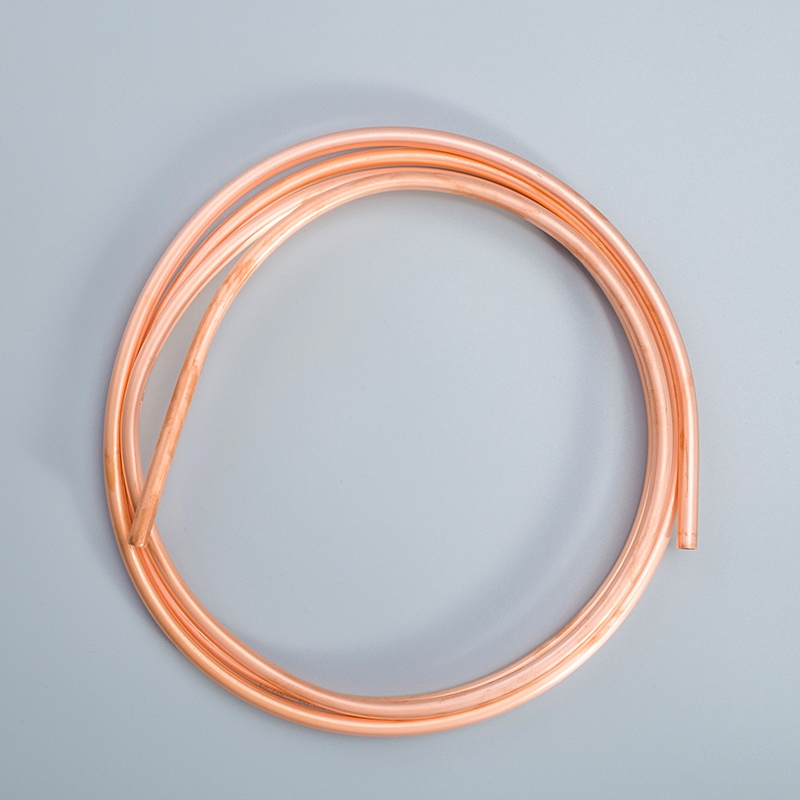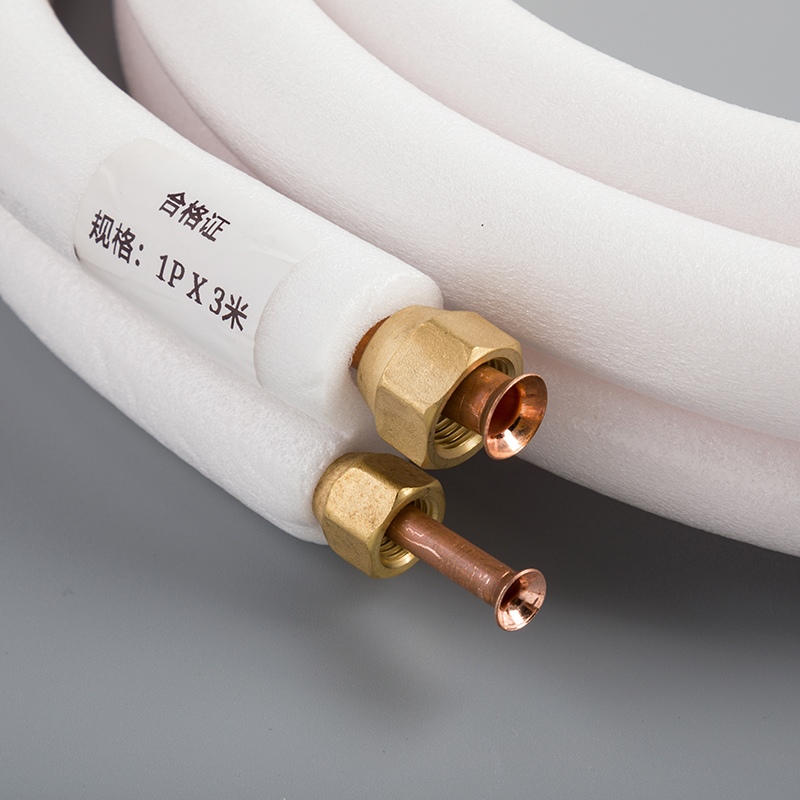How to Fix Frozen Copper Pipes in Your Air Conditioner

Maintaining your air conditioner is crucial to avoid unexpected issues. Frozen copper pipes are a common concern that can disrupt your cooling system's efficiency. Understanding the steps to address this problem is essential for every homeowner. By following a few simple guidelines, you can effectively tackle frozen copper pipes in your copper pipe AC unit and ensure optimal performance throughout the year. Proper maintenance of your insulated copper pipe air conditioning system is key to preventing these issues and keeping your copper pipe air conditioner running smoothly.
Immediate Actions to Take

When facing frozen copper pipes in your copper pipe AC unit, swift action is crucial to prevent further damage. Let's delve into the necessary steps you should take:
Turn Off the Air Conditioner
To begin, ensure safety by turning off your air conditioner immediately. This step is vital to avoid any potential hazards and protect your cooling system from additional harm.
Safety Precautions
Prioritize safety measures when dealing with frozen copper pipes. Remember, a cautious approach can prevent accidents and ensure a smooth resolution to the issue at hand.
Preventing Further Damage
By promptly shutting down the air conditioner, you can halt the progression of damage caused by the frozen pipes. This proactive measure sets the stage for effective troubleshooting and repair.
Allow the Pipes to Thaw
After turning off the unit, allow time for the frozen copper pipes to thaw naturally. Rushing this process can lead to complications, so patience is key in restoring your air conditioner's functionality.
Estimated Time for Thawing
The thawing duration may vary based on factors such as ambient temperature and ice buildup. Typically, it's advisable to wait until all ice has melted before proceeding with further assessments or actions.
Avoiding Quick-Thaw Methods
While it may be tempting to expedite the thawing process, avoid using quick-thaw methods like heat guns or open flames. These approaches can pose risks and potentially damage your copper pipe AC unit further.
Diagnosing the Problem
Check the Air Filter
When inspecting your copper pipe AC unit, always prioritize a clean air filter. A dirty filter restricts airflow, leading to potential issues with your cooling system. Regularly examining and replacing the air filter is essential for optimal performance.
Importance of a Clean Air Filter
A clean air filter ensures proper airflow throughout your insulated copper pipe air conditioning system. This simple maintenance task can prevent copper pipe air conditioner frozen situations and enhance overall efficiency.
How to Inspect and Replace the Air Filter
Begin by locating the air filter in your copper pipe AC unit. Remove it carefully and assess its condition. If dirty or clogged, replace it with a new one to maintain consistent airflow within your cooling system.
Inspect the Evaporator Coil
The evaporator coil plays a crucial role in the cooling process of your air conditioner. Identifying signs of a frozen evaporator coil is vital to addressing potential issues promptly.
Signs of a Frozen Evaporator Coil
Look out for visible ice buildup on the evaporator coil, which indicates a freezing problem in your AC unit. Addressing this promptly can prevent further complications and ensure efficient operation.
Cleaning the Evaporator Coil
To clean the evaporator coil, use gentle cleaning solutions and soft brushes to remove any debris or dirt accumulation. Proper maintenance of this component can prevent future instances of freezing in your air conditioner.
Examine the Refrigerant Levels
Maintaining adequate refrigerant levels is essential for proper cooling function in your AC system. Low refrigerant levels can lead to inefficiencies and potential freezing issues.
Symptoms of Low Refrigerant
Watch out for indicators such as reduced cooling performance or hissing sounds, which may suggest low refrigerant levels in your system. Addressing this promptly can prevent further damage to your AC unit.
How to Check Refrigerant Levels
Consult a professional technician to accurately assess and refill refrigerant levels in your air conditioner if needed. Properly maintaining these levels is key to preventing issues like frozen copper pipes in your cooling system.
Fixing the Issue

Clean or Replace the Air Filter
To maintain optimal performance of your copper pipe AC unit, regular maintenance of the air filter is crucial. Here's how you can effectively clean or replace it:
Step-by-step guide to cleaning
Gather a vacuum cleaner with a brush attachment and a damp cloth.
Turn off the air conditioner and locate the air filter in your unit.
Carefully remove the air filter and use the vacuum cleaner to remove dust and debris.
For stubborn dirt, gently wipe the air filter with a damp cloth.
Allow the air filter to dry completely before reinstalling it.
When to replace the air filter
If you notice significant dirt buildup or damage on the air filter, consider replacing it promptly.
As a general rule, aim to replace your air filter every three months for optimal efficiency.
Clean the Evaporator Coil
The evaporator coil is a vital component in your cooling system that requires regular cleaning to prevent issues. Here's what you need to know:
Tools needed
Soft bristle brush
Mild detergent or coil cleaner
Gloves and safety goggles for protection
Cleaning process
Turn off the air conditioner and access the indoor unit where the evaporator coil is located.
Gently brush off any visible debris or dust from the coil surface.
Mix mild detergent with water or use a specialized coil cleaner as per manufacturer instructions.
Apply the cleaning solution to the coil surface, ensuring thorough coverage.
Allow the solution to sit for a few minutes, then rinse off with clean water.
Let the evaporator coil dry completely before turning on your air conditioner.
Refill Refrigerant (if necessary)
Maintaining proper refrigerant levels is essential for efficient cooling in your AC system. Here's what you should consider:
When to call a professional
If you suspect low refrigerant levels or notice signs of refrigerant leaks, contact a certified technician for inspection and refill.
DIY refrigerant refill steps
Check for visible signs of refrigerant leaks around your AC unit.
If no leaks are detected, locate the service valves on your outdoor unit.
Attach a refill kit following manufacturer instructions but avoid overcharging.
Monitor pressure levels carefully during refilling to ensure correct levels are maintained.
When to Call a Professional
Persistent Issues
Signs that the problem is not resolved:
Reduced cooling performance despite thawing the pipes and cleaning components.
Audible hissing sounds indicating potential refrigerant leaks.
Recurring ice buildup on the evaporator coil after cleaning.
Potential underlying issues:
Refrigerant leaks may require professional inspection and refill to restore optimal levels.
Malfunctioning thermostat could lead to inconsistent cooling and frozen pipes, necessitating expert assessment.
Inadequate cold air circulation might indicate underlying issues with the compressor or ductwork, warranting professional intervention.
Recap the steps taken to resolve frozen copper pipes: turn off the AC, allow thawing time, and check filters and coils. Regular maintenance is key to preventing future issues. Remember, professional help is just a call away if needed. Stay proactive in caring for your air conditioner to enjoy uninterrupted cooling. As a 1st-time customer expressed, prompt service can save the day when your AC falters. David Nordente's letter of recommendation highlights the importance of timely repairs. Positive testimonials emphasize the value of efficient AC maintenance. Randy Harper's gratitude reflects the impact of outstanding service on customers' comfort and satisfaction.
See Also
Enhance Air Conditioner Efficiency with Copper Pipes Insulation Tips
The Revolutionary Impact of Pure Copper Pipes on Air Conditioning
Discover the Cooling Wonders of Pure Copper Pipes in AC Units
Benefits of Opting for Copper Pipes in Air Conditioning Systems
Key Advantages of Copper Pipes in Revolutionizing Air Conditioning


